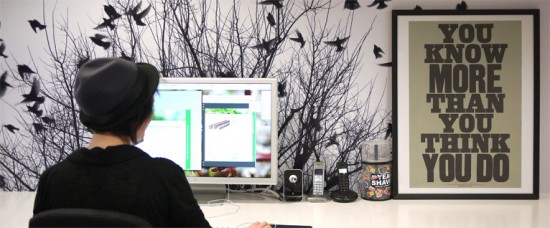Every artist dreams of having her own space, whether she is a professional or a hobbyist. It is easy to create a small artist studio in your own home with just a few simple steps. The first consideration will always be what type of art will be undertaken in the space. Photography, painting, sculpture, and other media all have their own unique considerations. However, there are a few standard necessities for any studio, whether it will be used for one specific type of art or a variety of them.
Lighting
The most important thing for creating art is having the appropriate lighting. This can be anything from electronic lights to having lots of natural light filtering in through windows. For spaces that require additional light, a full spectrum light works the best. This provides the full spectrum of sunlight, giving a similar experience to natural light, which lets you see what the colors of your piece really look like. This is extremely important for painters to ensure the precise mixing of various colors. You might also want to have some blackout curtains in case the natural lighting is bad. This provides you with more choices to control the light in the area.
Work Space
The next important consideration is the working space. An artist studio does not have to be huge; even a small walk in closet could work. The important aspect is that you are comfortable and can do your work. You might store your completed projects elsewhere if space is a limiting issue in the area or you can just hang it all on the wall. Furniture is also important for your workspace. Depending on your medium, this could include a throwing pot, a drafting tables, or other specific furniture. Alternatively, you could just need some shelves and a chair and table.
Supplies
All art studios require the right supplies. These could include easels, paints, pencils, canvas, clay, and more. You should have a list of your necessary supplies and always keep them in stock so that you do not have to run out to the store in the middle of a project. If you work in more technical arts, like digital photography, you might even invest in the equipment for printing your pieces on canvas or aluminum. In order for a studio to really work, it has to be fully stocked with all the necessities. You might even want to include a small refrigerator or coffee maker.
Special Needs
Some artistic ventures require specific needs. If you work with a lot of chemicals or oil paints and solvents, your studio must have proper ventilation. If it does not, then you could end up harming your health. If you work in pottery, you might have a kiln that requires meeting local regulations. For photographers developing film, having a dark room is essential. You can turn a regular studio into a dark room with the right supplies, like blackout curtains. When you create your space, you must keep in mind the specific use for it and ensure that any special requirements are considered.

